This post may contain affiliate links. For more information, read my disclosure policy.
When should you use unsalted butter or salted butter? What is unsalted butter? Why is it used in baking? Learn about the differences between salted and unsalted butter and when to use them!
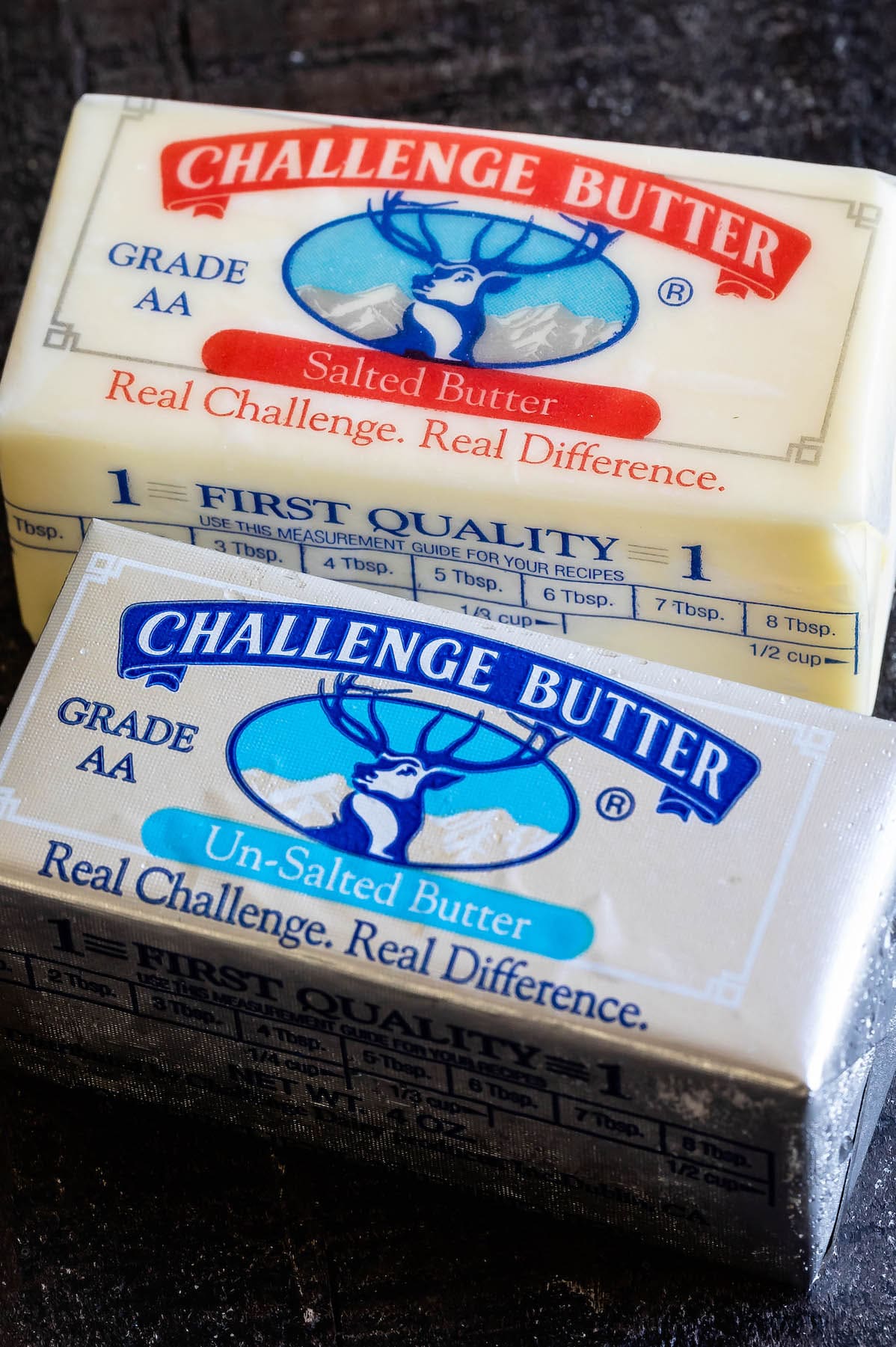
What’s the difference between Salted Butter and Unsalted Butter?
There is only one difference between the two – salt. Both types of butter are made with cream except that salted butter contains salt and unsalted butter doesn’t. The amount of salt in salted butter will vary by brand.
Salt adds flavor to the butter and, since salt is a preservative, salted butter will last longer in the refrigerator (about 5 months versus unsalted butter, which has a shelf life of about 3 months).
Why do we use unsalted Butter in baking?
Since unsalted butter is just churned cream with nothing else added, the flavor of the sweet cream stands out. Salted butter has a saltier taste, which can cloud the taste of your baked goods. When you want to have complete control over the flavor in your recipe, you want to use unsalted butter. When you control the salt, you control the flavor of the finished product. Controlling the flavor is key, especially in recipes where you want the sweet cream flavor of the butter to shine through (like in cupcakes or sugar cookies). Since different butter brands have different salt content, using salted butter means you have zero control over the salt in your recipe. Baking is a science, after all, and too much salt can affect your recipe just like using too much flour can.
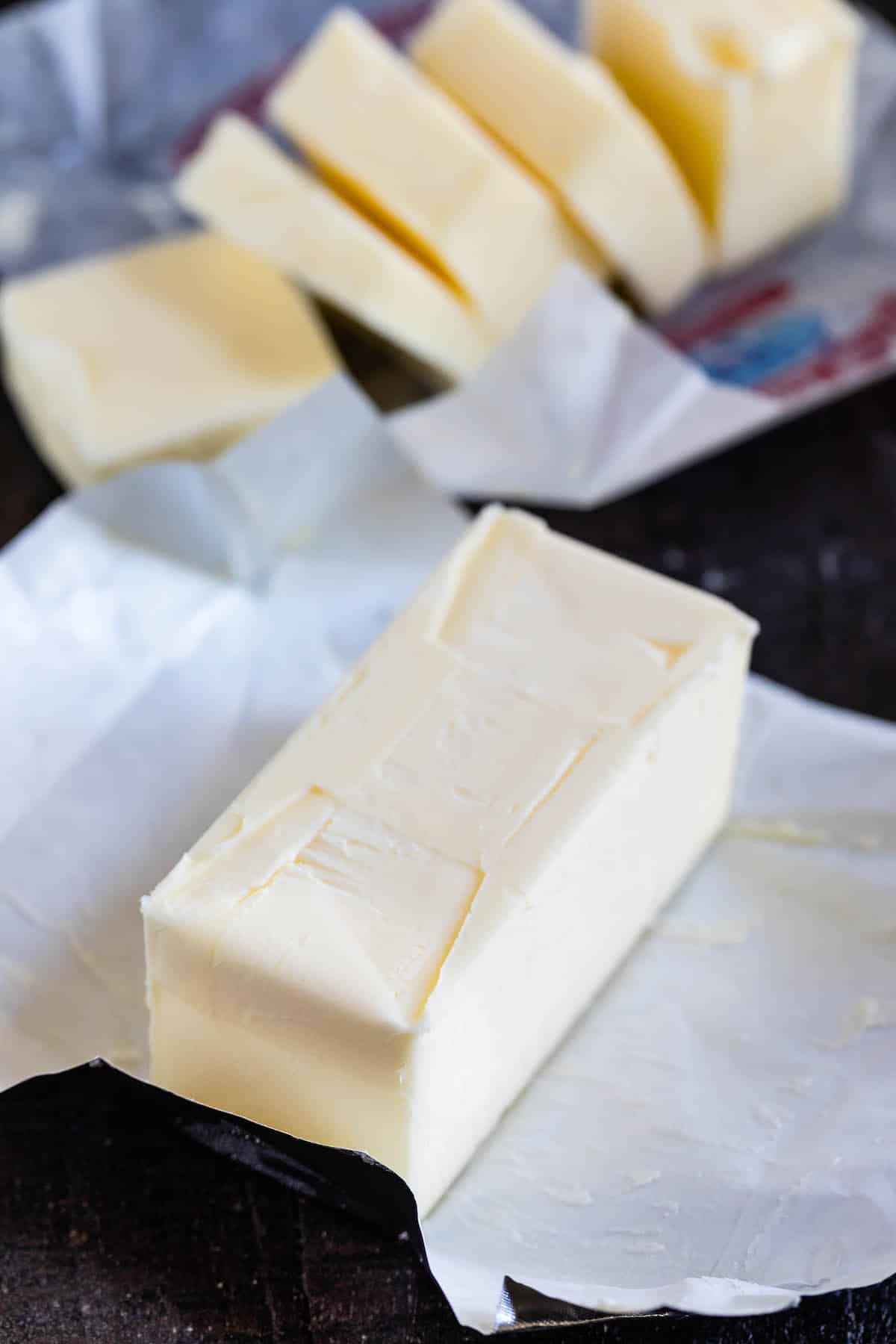
When to use salted butter
Just because you should bake with unsalted butter, it doesn’t mean you never need salted. Have you ever actually tasted sweet cream butter? It’s not very good because there is no real flavor (i.e. SALT). Salted butter is what you want to use when spreading butter on bread or noodles or a warm muffin. I also like to use salted butter for cooking but again, if you want to control the salt in your recipe opt for even cooking with unsalted butter.
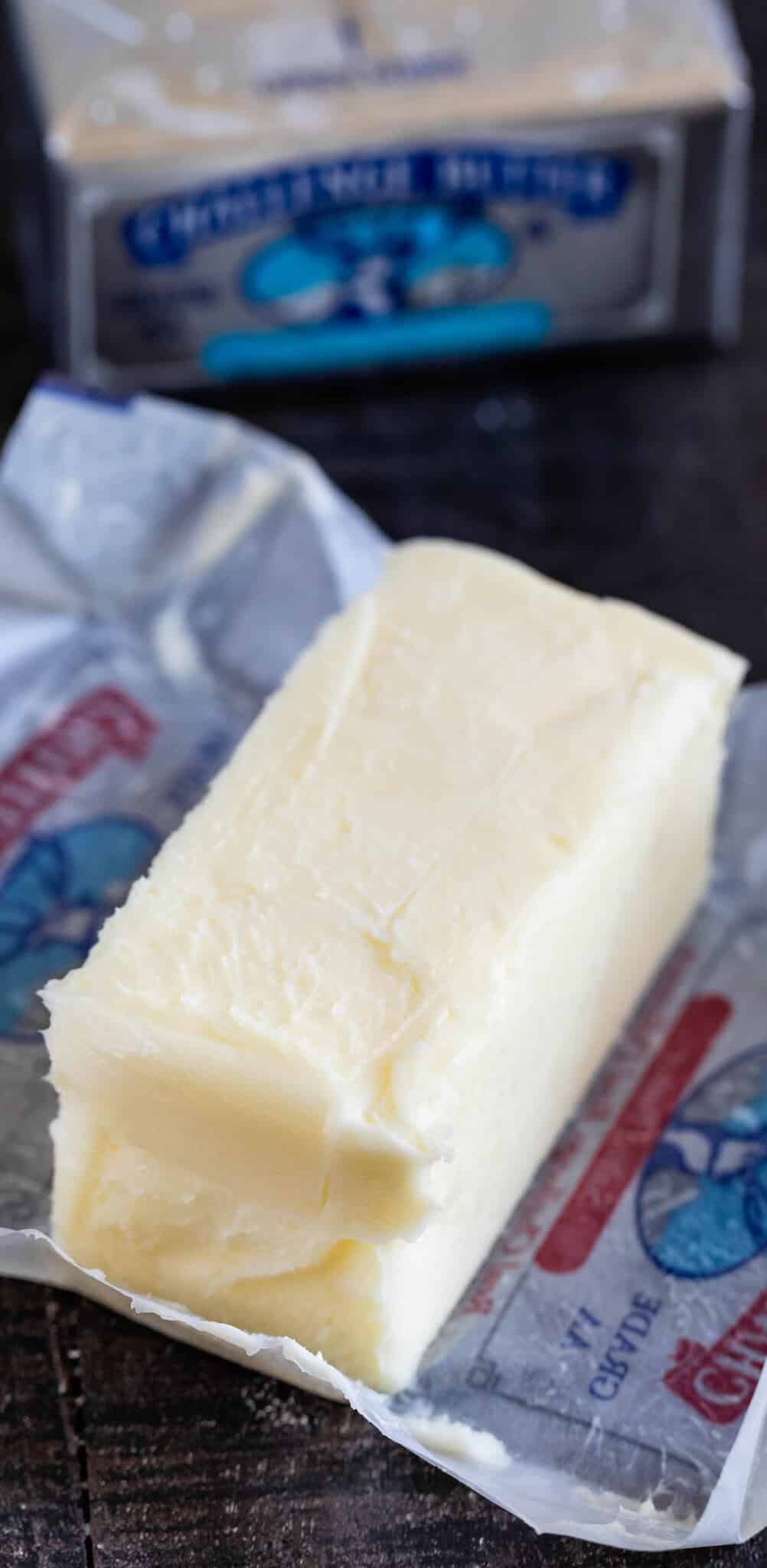
FAQs
A good recipe will say write “salted” or “unsalted” butter. I think the general rule of thumb is that just “butter” in a baking recipe specifies unsalted but really, every recipe author does something differently. To be able to tell, look at the amount of salt in the recipe. Usually in a baking recipe the most salt you’ll see is 1/4-1/2 teaspoon per 1/2 cup (1 stick) unsalted butter. If there is a lot more than that, be sure to use unsalted. If there is less, use salted.
No. Just NO. Please. For the love of cookies do not substitute margarine (or light butter or a butter substitute) when the recipe calls for butter. In fact, if you want a baking recipe to turn out you can almost never substitute anything for the specific butter called for. You can try, but the recipe will be different and may fail.
Yup, it’s true. I freeze butter all the time. Whenever Challenge sends me a shipment, I freeze it knowing I cannot possibly use it all before it expires. I used to buy butter in bulk at Costco and freeze it as well. I bake way more than the average person so if a normal person was to buy bulk butter at Costco it might not last until they’re able to use it. Freeze it to increase the longevity of the butter! Then you’ll always have affordable real butter!
Now that you know how which butter to use, be sure to learn how to soften butter or check out all of my baking tips!
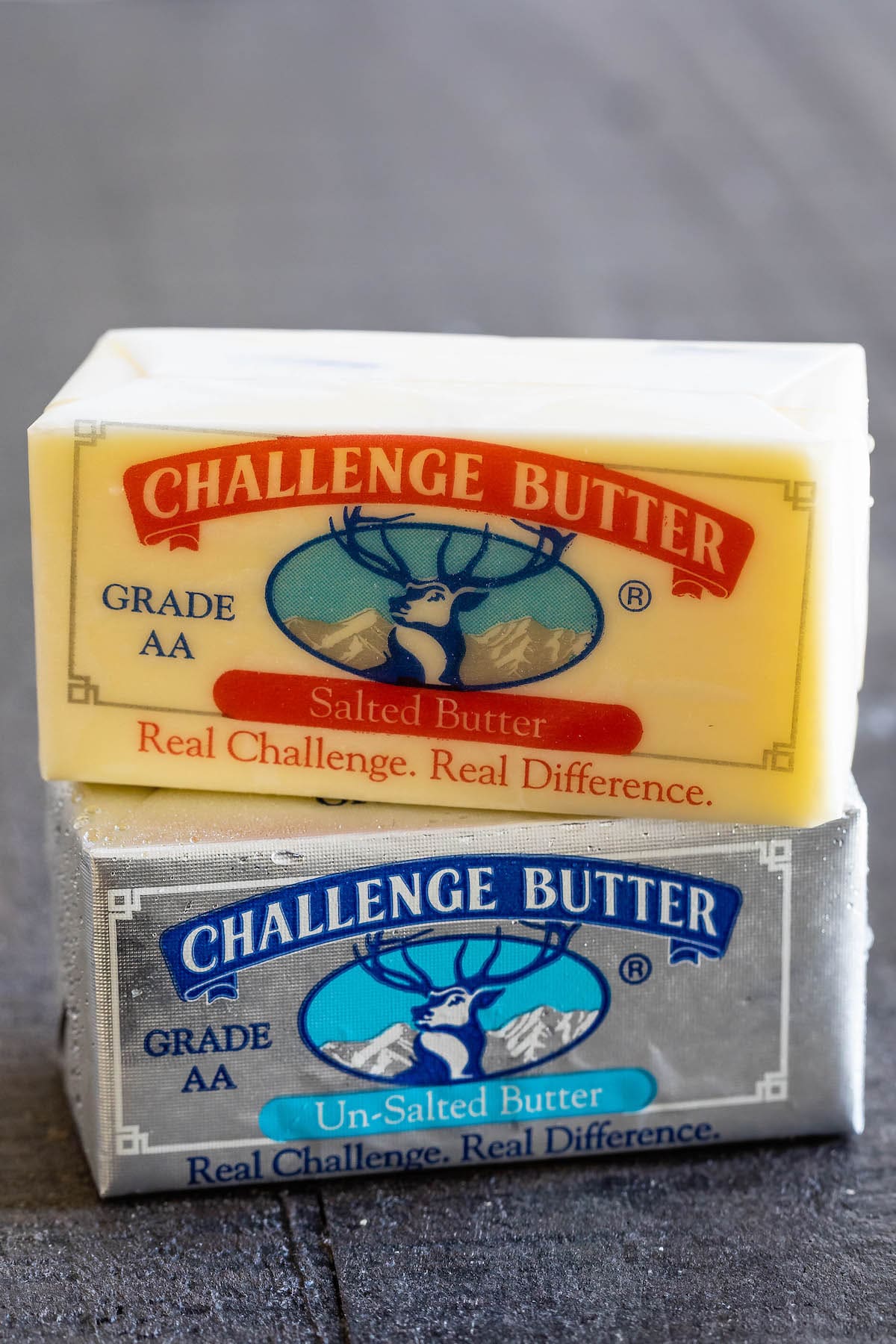
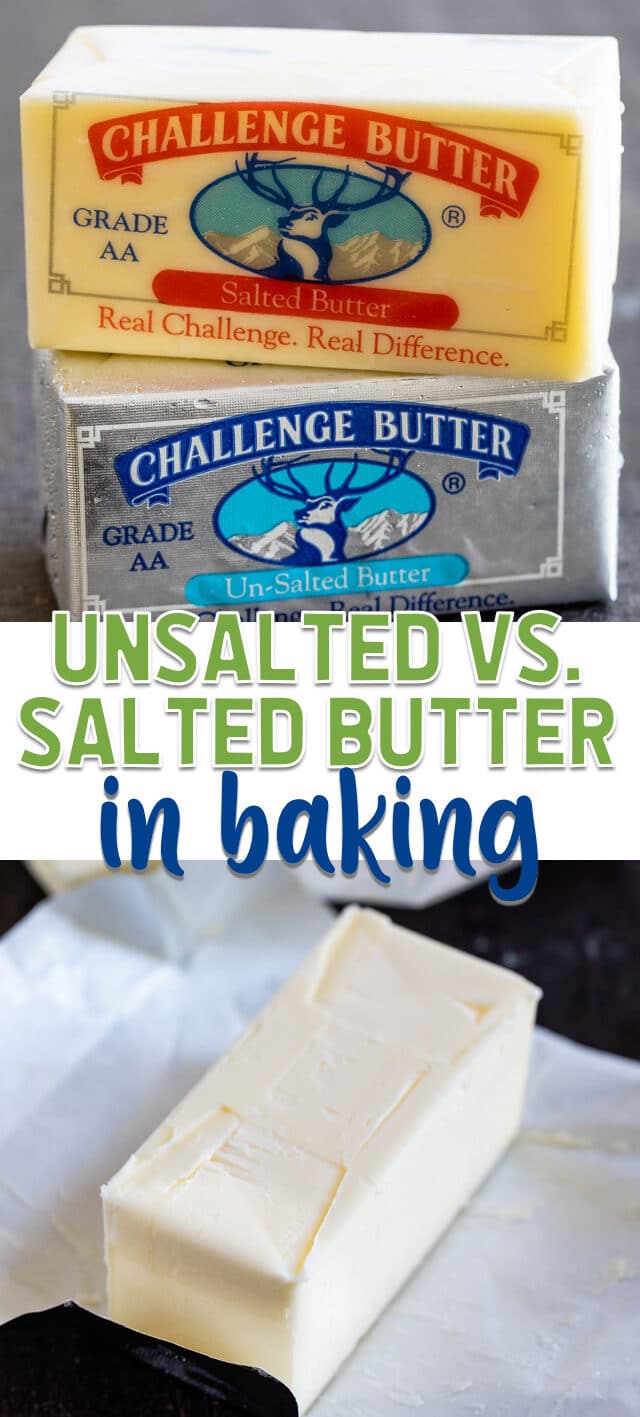
i always use salted butter in all my recipes , i live in Ireland and it is very hard to get unsalted butter , i’ve never tried using unsalted butter and adding salt in a recipe i must do to taste the difference or if their is one but i know everything i bake is not salty like if you used to much bread soda if you no what i mean x
I can think of one other reason to use salted butter when baking. My family has been making Swedish Pepparkokar for generations (they are hands down the most delicious Christmas cookie ever and I’ll fight anyone who says otherwise). The recipe handed down to me from my parents lists absolutely no salt in the recipe.
I knew nothing about salted vs. unsalted butter and when I started making mine on my own. I just used what I usually bought and it was generally salted butter because a pepparkokar batch once a year was pretty much the only baking I ever did. I usually bring some of mine home for Christmas and for years thought they had an extra punch of spicy flavor compared to those my sister and parents made. Then I discovered that my parents use unsalted butter, which explains why mine have a little more flavor – they have some salt rather than none.
Wow great eye opener… love this post I LUV butter …is it healthier than margarine????????do they make LITE butter????
I buy both and if the recipe calls for unsalted I use unsalted otherwise I only use salted and do not change the salt. My baked goods never taste salty. From past research I have been told and have read that an entire pound of butter has less than 1/2 tsp. of salt.
I wish I could print this to stick inside my recipe books. Thanks for the info!
Featured In